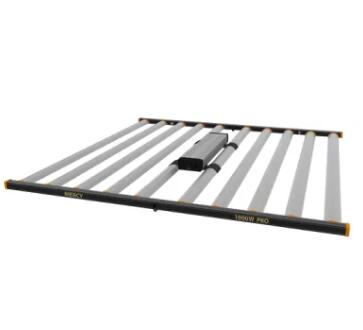Illuminating Growth: A Comparative Analysis of LED, Fluorescent, and HID Grow Lights for Plants
2023-12-13
Introduction:
As indoor gardening and cultivation continue to gain popularity, the choice of lighting plays a crucial role in the success of plant growth. LED (Light Emitting Diode), fluorescent, and High-Intensity Discharge (HID) lights are among the most common artificial lighting options for plants. In this blog, we'll delve into a comparative analysis of these lighting technologies, exploring how LED grow lights stack up against fluorescent and HID lights in fostering healthy and robust plant development.
1. Spectrum and Light Quality: The Power of Precision
- LED Grow Lights: LED lights are renowned for their ability to provide a customizable and precise light spectrum tailored to plants' specific needs. With advanced technology, LED grow lights can be fine-tuned to emit the ideal spectrum for each stage of plant growth, promoting photosynthesis and overall health.
- Fluorescent Lights: Fluorescent lights, while versatile, may have limitations in providing a broad and customizable spectrum. Standard fluorescents emit a broad spectrum but may lack intensity in certain wavelengths crucial for plant growth.
- HID Lights: HID lights, particularly Metal Halide (MH) and High-Pressure Sodium (HPS), offer a balanced spectrum suitable for various growth stages. However, they may lack the precision and efficiency of LEDs in providing targeted light wavelengths.
2. Energy Efficiency: Illuminating the Green Path
- LED Grow Lights: LED lights are renowned for their energy efficiency. They produce light with minimal heat, directing a higher percentage of energy towards photosynthesis. This not only reduces electricity costs but also minimizes the need for additional cooling systems.
- Fluorescent Lights: Fluorescent lights are generally more energy-efficient than traditional incandescent bulbs. However, they may produce more heat than LEDs and still consume more energy compared to their LED counterparts.
- HID Lights: HID lights, particularly HPS, can be less energy-efficient than LEDs. They generate significant heat, requiring additional cooling systems. This can result in higher energy consumption and operational costs.
3. Lifespan and Durability: The Longevity Factor
- LED Grow Lights: LED lights have an impressive lifespan, often exceeding 50,000 hours of use. They are solid-state lights, meaning they have no moving parts and are less prone to damage from vibrations or impacts.
- Fluorescent Lights: Fluorescent lights have a decent lifespan, typically ranging from 8,000 to 20,000 hours. However, they are more fragile than LEDs and can be sensitive to frequent on/off cycling.
- HID Lights: HID lights, particularly HPS bulbs, have a moderate lifespan of around 10,000 to 24,000 hours. However, their efficiency tends to degrade over time, necessitating periodic replacements.
4. Heat Emission: The Cool Advantage
- LED Grow Lights: LED lights produce minimal heat, making them ideal for close-proximity lighting without risking damage to plants. This characteristic allows for more flexibility in light placement and reduces the need for additional cooling systems.
- Fluorescent Lights: While more energy-efficient than incandescent lights, fluorescent lights emit more heat than LEDs. This can necessitate additional ventilation and cooling measures, especially in confined spaces.
- HID Lights: HID lights, particularly HPS bulbs, emit a significant amount of heat. This necessitates the use of cooling systems to prevent overheating and potential damage to plants.
5. Size and Form Factor: Compact Versatility
- LED Grow Lights: LED grow lights come in various sizes and form factors, allowing for flexibility in design and placement. This versatility is particularly advantageous for growers with limited space or specific layout requirements.
- Fluorescent Lights: Fluorescent lights are available in different shapes and sizes, offering a degree of flexibility. However, they may be bulkier and less adaptable compared to compact LED designs.
- HID Lights: HID lights, especially HPS fixtures, tend to be larger and bulkier than LED and fluorescent options. This can limit their suitability for smaller grow spaces or intricate setups.
Conclusion: Lighting the Way Forward
In the quest for optimal plant growth, the choice of lighting is a pivotal decision for indoor growers. While each type of artificial lighting has its advantages, LED grow lights stand out for their precision in spectrum control, energy efficiency, longevity, low heat emission, and versatile form factors. As technology continues to advance, LED grow lights are likely to maintain their position at the forefront of indoor cultivation, offering a perfect blend of efficiency, adaptability, and plant-focused illumination.



